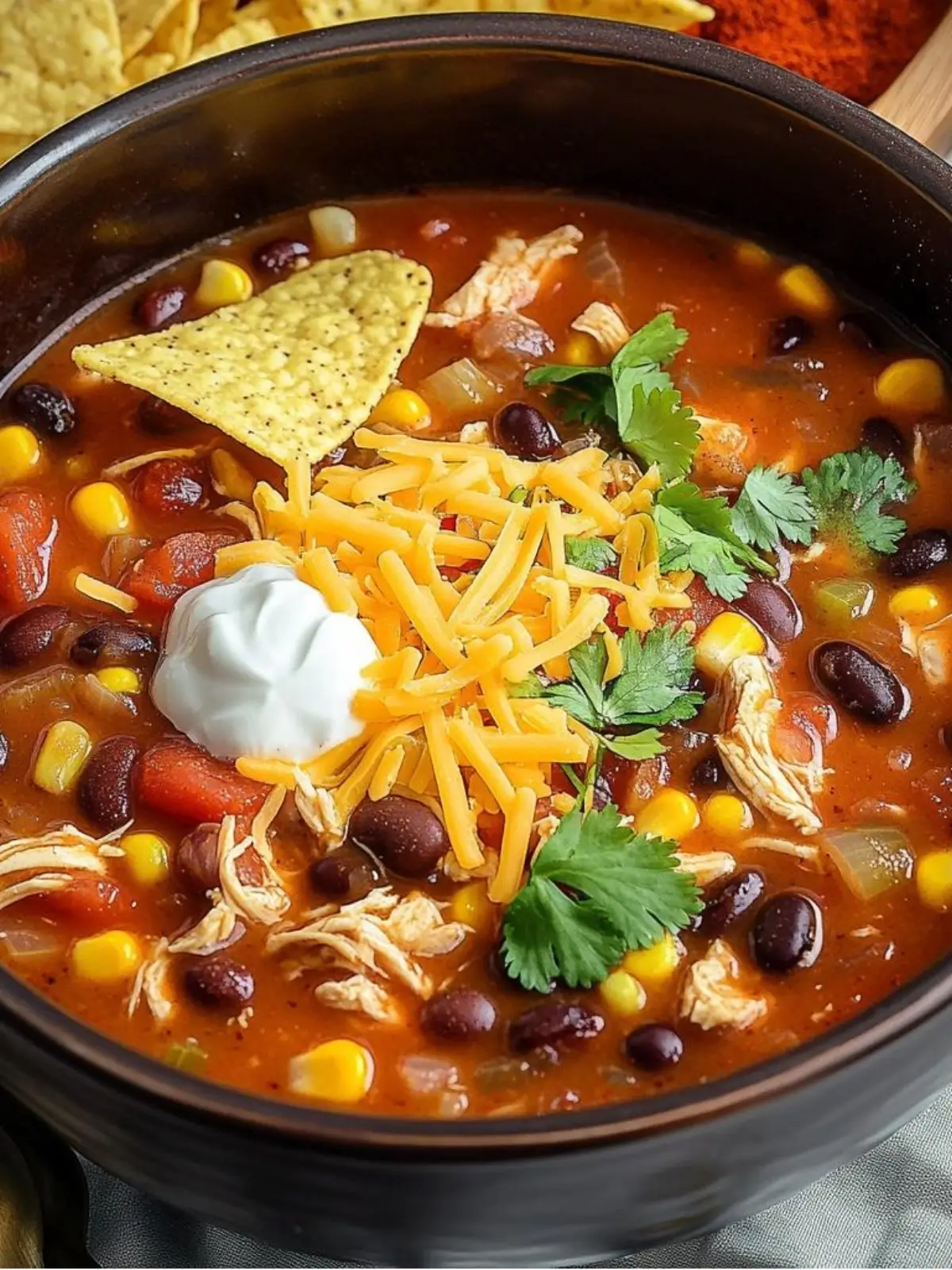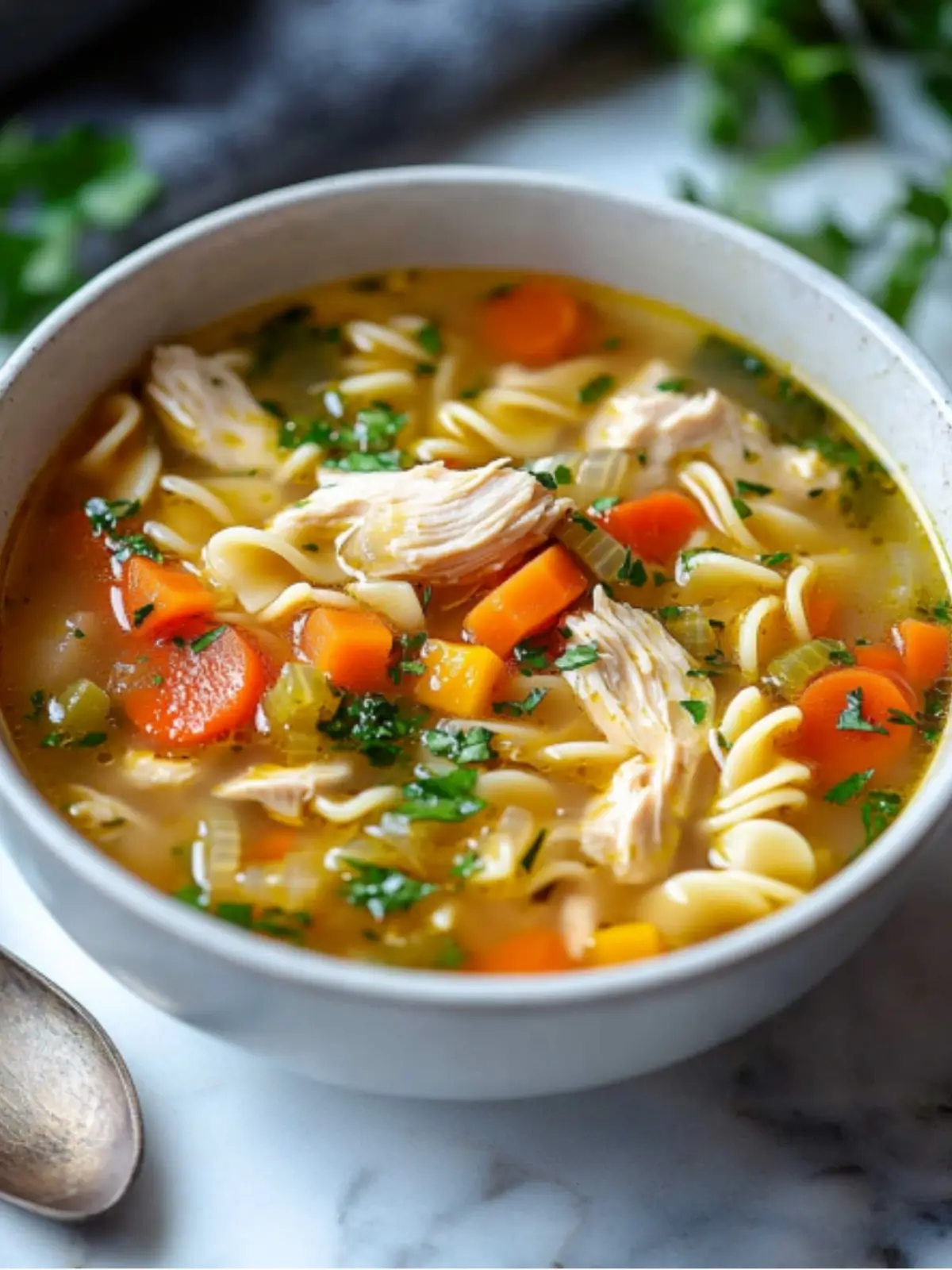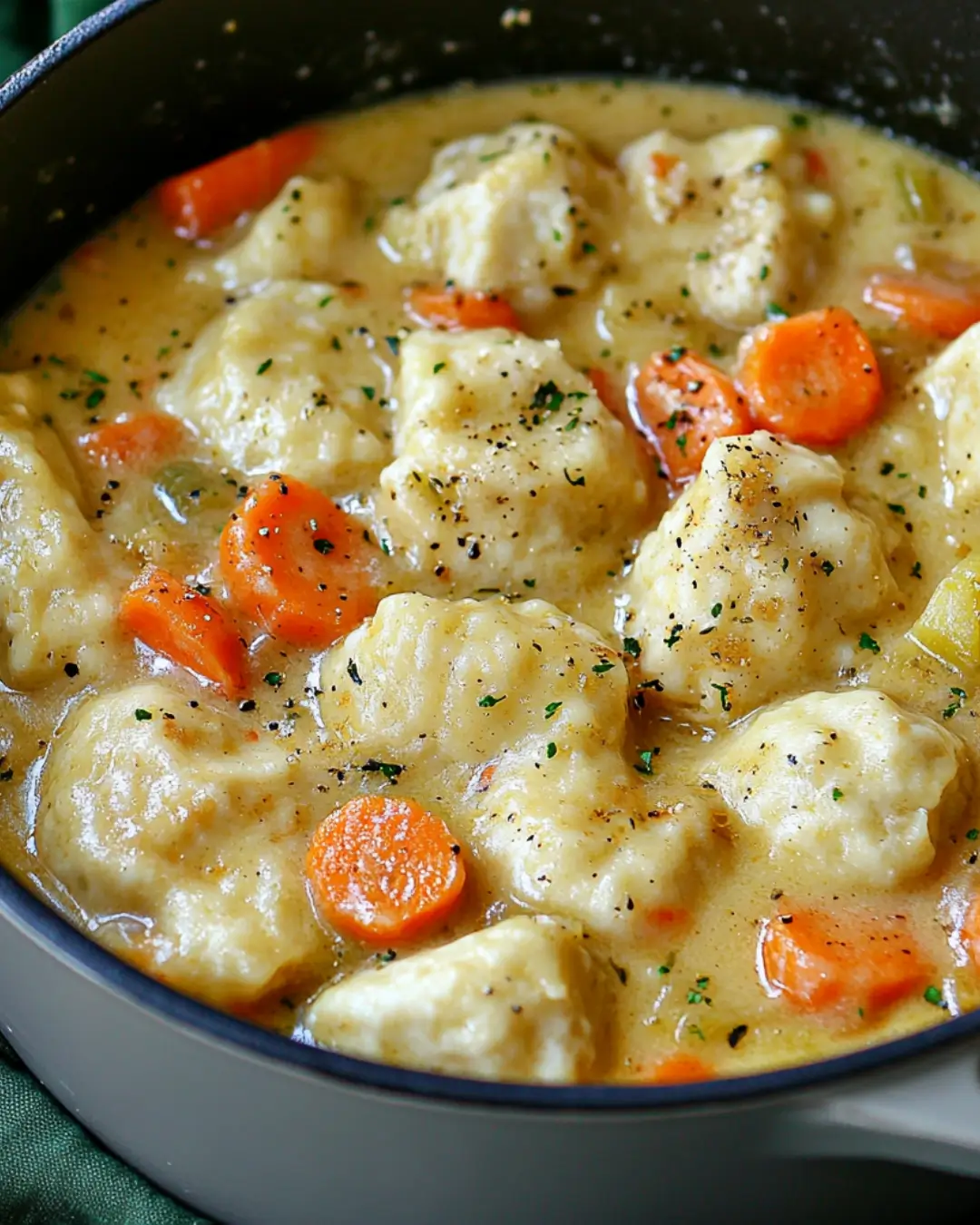ADVERTISEMENT
Broccoli Cheese and Potato Soup is a comforting and creamy dish that combines the rich flavors of cheddar cheese, tender broccoli, and hearty potatoes.
Often considered a staple during the colder months, this soup provides warmth and satisfaction with each spoonful. The origins of this dish trace back to the traditional use of broccoli in various cuisines, enhanced in the modern kitchen with the addition of cheese and potatoes for a more robust meal.
The popularity of this soup has grown due to its simple preparation and wholesome ingredients, making it a favorite among families seeking a nutritious dinner option. Learn more about broccoli and its uses in various dishes.
Nutritional Benefits
Broccoli Cheese and Potato Soup isn't just delicious; it's also packed with nutritional benefits.
The main ingredients are powerhouse foods. Broccoli is renowned for its high vitamin C content and dietary fiber, essential for digestive health. Potatoes provide a good source of potassium, which is crucial for heart health, while cheddar cheese adds a creamy texture and valuable calcium for bone strength.
This soup serves as an excellent way to enjoy a meal that supports a healthy lifestyle while being utterly delicious. Each serving offers a balanced mix of nutrients, making it a smart choice for a family meal.
Understanding the components can enhance your appreciation of the dish, especially when considering the benefits of dietary fiber found in its vegetable components.
Broccoli Cheese and Potato Soup Recipe Variations
Exploring different variations of Broccoli Cheese and Potato Soup can keep your meals exciting and adaptable to different dietary needs. Here are a few popular versions:
- Classic Version: The traditional recipe involves simmering together broccoli, potatoes, and onions in a chicken or vegetable broth, thickened with flour and enriched with grated cheddar cheese.
- Vegan Version: For a dairy-free alternative, replace the cheese with nutritional yeast, which provides a cheesy flavor without the use of animal products. Use almond or soy milk instead of regular milk to maintain the creamy consistency.
- Low-Fat Version: Opt for low-fat milk and reduced-fat cheese to decrease the calorie content. This version maintains the creamy texture and flavor but with fewer calories.
- Keto-Friendly Version: Substitute the potatoes with cauliflower to reduce the carbohydrate content significantly, making it suitable for a ketogenic diet.
Cooking Techniques
The method you choose to cook Broccoli Cheese and Potato Soup can affect the texture and flavor of the final dish. Here are the three most common techniques:
- Stovetop Method: This traditional approach involves sautéing onions and garlic in butter, then adding broth, potatoes, and broccoli. The ingredients are simmered until tender, followed by the addition of milk and cheese for creaminess.
- Instant Pot Version: Utilizing an Instant Pot can significantly reduce cooking time. Combine all ingredients except for the cheese and milk in the pot. Cook under high pressure for a few minutes, then stir in the dairy components until smooth.
- Slow Cooker Approach: For those who prefer a hands-off method, the slow cooker is ideal. Layer the ingredients in the cooker, pour in the broth, and set it to low for several hours. Near the end of cooking, blend in the dairy ingredients to achieve the desired creamy texture.
Each method has its merits, depending on your time constraints and flavor preferences.
Experimenting with these techniques can lead to discovering your perfect version of this hearty winter soup. For more information on soup preparation and history, consider visiting the history of soups on Wikipedia.
Serving Suggestions
Serving Broccoli Cheese and Potato Soup can be as creative as you like. To elevate this hearty dish, consider the following garnishes and sides:
- Garnishes: Sprinkle crumbled bacon, chopped fresh parsley, or a dollop of sour cream on top of the soup to add texture and richness. A light dusting of paprika or red pepper flakes can also enhance the soup's visual appeal and flavor.
- Sides: Serve the soup with crusty bread or a warm baguette for dipping. For a lighter option, a crisp green salad with a vinaigrette dressing complements the creaminess of the soup well.
These additions not only improve the meal's presentation but also add contrasting flavors and textures that make the soup even more enjoyable. For inspiration on other hearty soup recipes, you can browse through Pinterest: Hearty Soup Recipes.
Common Mistakes and Troubleshooting
Even a simple soup can sometimes pose challenges in the kitchen. Here are some common issues that might arise while making Broccoli Cheese and Potato Soup, along with solutions to ensure a perfect dish every time:
- Soup is too thin: If your soup lacks thickness, mix a tablespoon of cornstarch with equal parts water and stir it into the simmering soup until the desired consistency is reached.
- Flavors are too bland: Enhance the soup by adding more salt, pepper, or aromatic spices like nutmeg or mustard powder. Sometimes a splash of white wine can deepen the flavor profile significantly.
- Cheese clumps in the soup: To prevent this, ensure the soup is not boiling when you add the cheese. Gradually stir in grated cheese on low heat until it melts smoothly into the soup.
- Vegetables are overcooked: Add delicate vegetables like broccoli later in the cooking process to avoid them becoming too mushy.
Addressing these issues will help you achieve a creamy, delicious soup that is just right. For further tips on vegetarian cooking and ingredients, check out Wikipedia: Vegetarian Cuisine.
FAQs for Broccoli Cheese and Potato Soup Recipe
Here are some frequently asked questions about Broccoli Cheese and Potato Soup:
- What can I substitute for cheddar in the soup?
- Try using other melting cheeses such as Gruyere, Monterey Jack, or a blend of your favorite cheeses for different flavors.
- How can I thicken the soup without flour?
- Use pureed cooked white beans or cauliflower as a gluten-free thickener that also adds nutritional value.
- Tips for storing and reheating?
- Store the soup in an airtight container in the refrigerator for up to three days. Reheat gently on the stove, adding a little milk or broth if the soup has thickened too much.
These questions help address common concerns and enhance the cooking experience. For anyone on a special diet, understanding what is a gluten-free diet can be crucial in adapting recipes to meet dietary needs.
Print
ADVERTISEMENT
Broccoli Cheese and Potato Soup Recipe
- Total Time: 35 minutes
Description
This creamy Broccoli Cheese and Potato Soup combines the comforting flavors of tender broccoli, hearty potatoes, and rich cheddar cheese. Perfect for chilly evenings, this soup is both satisfying and nutritious, offering a delightful blend of textures and tastes.
Ingredients
- 2 tablespoons unsalted butter
- 1 medium onion, chopped
- 2 cloves garlic, minced
- 3 cups chicken or vegetable broth
- 2 cups diced potatoes
- 3 cups chopped broccoli
- ½ teaspoon salt
- ¼ teaspoon pepper
- ⅛ teaspoon nutmeg
- 1 cup grated cheddar cheese
- 1 cup milk
- ¼ cup all-purpose flour
Instructions
- In a large pot, melt butter over medium heat. Add onion and garlic, sautéing until soft.
- Add broth, potatoes, and broccoli to the pot. Season with salt, pepper, and nutmeg. Bring to a boil, then reduce to a simmer and cook until vegetables are tender, about 10-15 minutes.
- In a separate bowl, whisk together milk and flour until smooth. Gradually stir into the soup. Cook until the soup thickens, about 5 minutes.
- Remove from heat. Stir in cheddar cheese until melted and smooth. For a smoother soup, use an immersion blender to puree directly in the pot to your desired consistency.
Notes
- For a vegan version, substitute the butter with olive oil, the milk with a plant-based alternative, and use vegan cheese.
- Add additional cheese on top before serving for extra richness.
- Prep Time: 10 minutes
- Cook Time: 25 minutes
- Category: Soup
- Method: Stovetop
- Cuisine: American
Nutrition
- Calories: 250 kcal
- Sugar: 4 g
- Fat: 13 g
- Carbohydrates: 24 g
- Fiber: 3 g
- Protein: 9 g
- Cholesterol: 35 mg





Leave a Reply